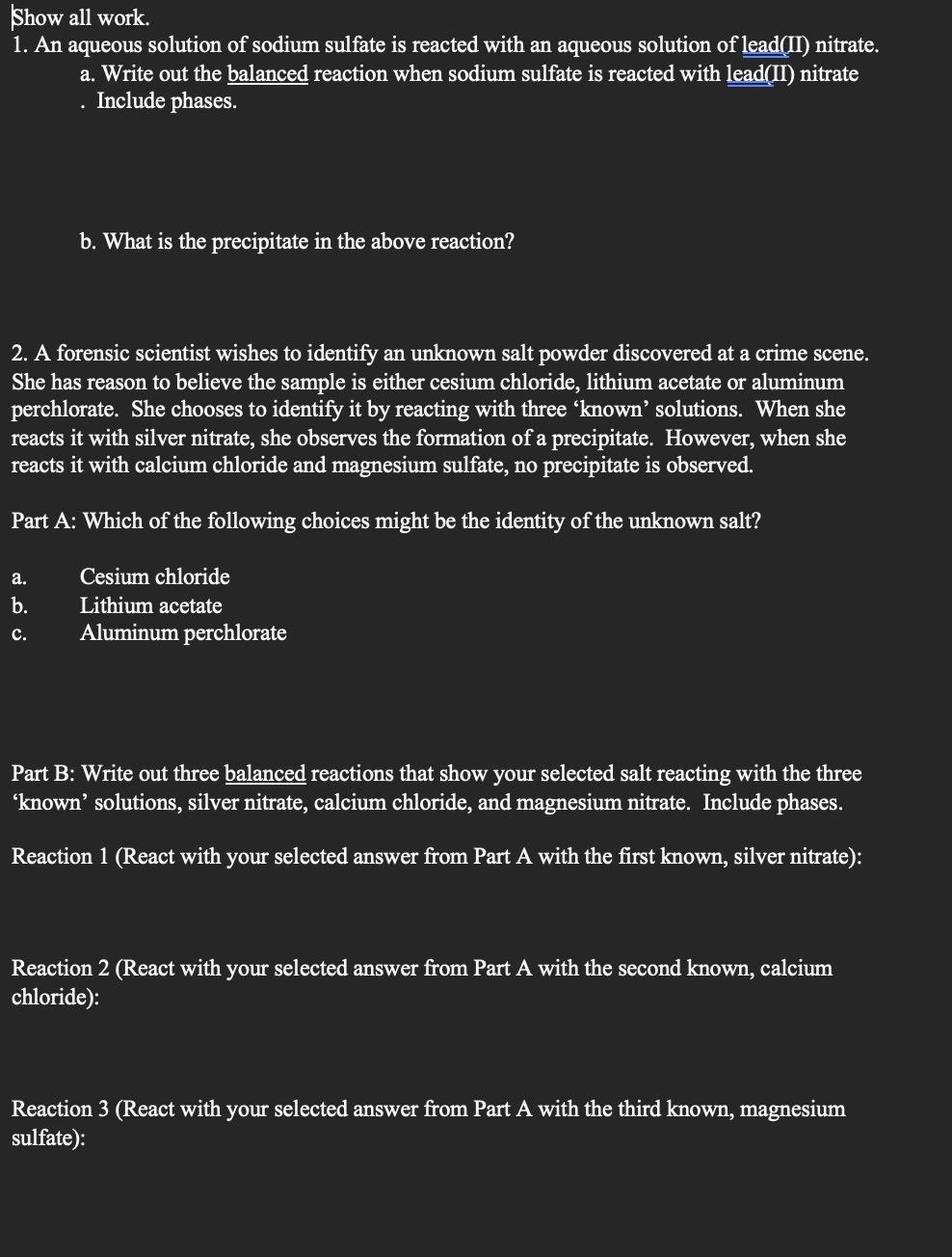Question
Show all work. 1. An aqueous solution of sodium sulfate is reacted with an aqueous solution of lead(II) nitrate. a. Write out the balanced reaction
Show all work.
1. An aqueous solution of sodium sulfate is reacted with an aqueous solution of lead(II) nitrate.
a. Write out the balanced reaction when sodium sulfate is reacted with lead(II) nitrate
. Include phases.
b. What is the precipitate in the above reaction?
2. A forensic scientist wishes to identify an unknown salt powder discovered at a crime scene. She has reason to believe the sample is either cesium chloride, lithium acetate or aluminum perchlorate. She chooses to identify it by reacting with three known solutions. When she reacts it with silver nitrate, she observes the formation of a precipitate. However, when she reacts it with calcium chloride and magnesium sulfate, no precipitate is observed.
Part A: Which of the following choices might be the identity of the unknown salt?
a. Cesium chloride
b. Lithium acetate
c. Aluminum perchlorate
Part B: Write out three balanced reactions that show your selected salt reacting with the three known solutions, silver nitrate, calcium chloride, and magnesium nitrate. Include phases.
Reaction 1 (React with your selected answer from Part A with the first known, silver nitrate):
Reaction 2 (React with your selected answer from Part A with the second known, calcium chloride):
Reaction 3 (React with your selected answer from Part A with the third known, magnesium sulfate):
Step by Step Solution
There are 3 Steps involved in it
Step: 1

Get Instant Access to Expert-Tailored Solutions
See step-by-step solutions with expert insights and AI powered tools for academic success
Step: 2

Step: 3

Ace Your Homework with AI
Get the answers you need in no time with our AI-driven, step-by-step assistance
Get Started


